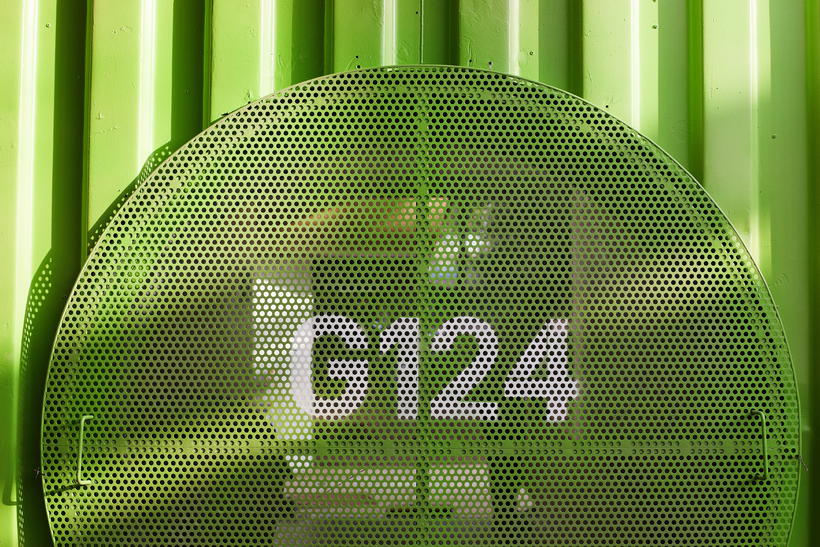architect: Massimo Alvisi
On the occasion of the 16. Biennale of Architecture in Venice, Area interviews Massimo Alvisi and Junko Kirimoto, founders of Alvisi Kirimoto, the design team formed in Rome in 2002. Alvisi and Kirimoto's main ideas are based on the requalification of landscape and on the relentless collaboration with clients, paying attention to materials and details, in order to achieve “qualitative space“.
“User's senses must be stimulated from the quality of space around. To create qualitative spaces is our main goal.“ claimed Massimo Alvisi, during a brief talk inside the gardens of the Italian Pavilion.
R.C. What do you think of the current Italian Pavilion? What distinguishes it compared to the past editions?
M.A. Basically, this year the Italian Pavilion, curated by Mario Cucinella entitled “Arcipelago Italia“, broght together three main themes. On one hand, there has been the will of rethinking of the central areas of the Peninsula, meant not only as beautiful extinguished places, but also as areas to build and rebuilt. On the other hand, there has been a deep analysis on the current Italian situation in order to choose specific sites that needed to take action. Furthermore, the third theme is itinerary, conceived likely as the historic ‘Italian Touring Club‘ that was an emotional and literary guide, as well as touristic, capable of giving information on the Italian villages along the Country and of creating a ‘soul path‘.

R.C. In fact, you have been asked to partecipate to the Scientific Committee and to support the research of strategic areas that needed to be retrained in Italy. We were wondering if you could explain us the criteria for the selection of the areas.
M.A. Italian territory is made of unique places and one differs from another. Together with Mario Cucinella, we thought that the selection should be based on the necessity of action, measurable not only from an architectural and economic point of view but also socially.
We looked for the Italian villages living a strong social unrest, such as the village of Camerino, in the region of Marche, where the population is forced to live outside the city centre, that is hidden and unaccessible, besides it represents the most valuable part of the village. We basically hunted places under social malaise.
Another example is the city of Gibellina, in Sicily, that is an unsuccessful urban project, perhaps too ambitious or too much self-referential. Instead of breaking down, here we believed there is the need of reconnecting the farming land with the urban fabric.
In this context, the work of the architect Pietro Consagra seemed to be a good connector between the farming areas and the urban reality, after the inhabitants' request of reactivating the economic fabric of the city.
Another topic is health and this interested mostly the region of Sardinia. We felt the need not only to design hospitals or medical centres, but also to plan an accurate urban program, being the city responsible for the citizens' health.
In fact, there are actually two kinds of patients: those who need a medical treatment and then an accurate complex, and those who are chronic patients and must be cured by the city itself and the architectures in it. I really believe that cities must take care of people who live in it.
R.C. As tutor of Casa Italia, you must have been busy also with the choice of those cities where operate. How happened this selection instead?
M.A. As I told you before, the choice has been guided from the social needs more than economic or seismic ones. We looked for places that are weaker from a social point of view: abandoned places or locations where citizens do not feel comfortable to live in.
The depopulation is also another main topic which I suggest to reflect on. It creates discomforts to people and architecture, since buildings are not groomed and none takes care of them. This argument interests also major touristic Italian centres such as the historical centre of Rome, with thousands of b&b and hotels, always full of people but none that restores and takes care of them.

R.C. What do you wish the exhibition could express to the visitors of Biennale?
M.A. Regarding ‘the care of the building‘, we would like to offer instruments in order to have time for architecture. Then, being the Italian villages surrounded by significant architecture, we would like to put the accent on them and the landscape, meant as a productive system, able to revitalise the economy, according to what Palladio said.
For example, our Cantina Bulgari in Podernuovo (Tuscany) represents a key project for the relation between architecture and industrialised landscape.
Moreover, on the occasion of the Biennale of Architecture, many young architects designed works that presented innovative ideas, especially from a programmatic point of view, and this was useful to show how complex architecture is. It is made of different elements and figures, such as a sociologist, an engineer, an architect, a psychologist, forming together a team that aims to connect buildings with site and people who live in it.
R.C. What would you suggest young architects to focus on? What suggestions would you give to them in order to design “qualitative spaces“?
M.A. As a tutor of the program G124 and of the Committee of the Biennale, I personally suggest them to listen to places, listen to people who live them, but always looking for an international dimension. I would say: “think local but look for foreign inputs“. I really believe that young designers should go abroad to practice and learn skills, then, once come back, they can apply what learnt in their own territory.




